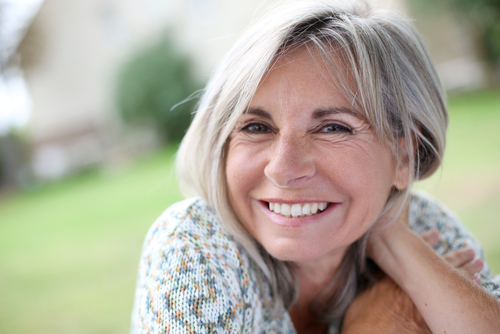 There are many parts of aging that are frustrating and even painful, but for women going through menopause, vaginal health can be a serious problem.
There are many parts of aging that are frustrating and even painful, but for women going through menopause, vaginal health can be a serious problem.
For years the only treatment for dryness has been estrogen supplements or creams and lubricants that are often messy and uncomfortable. Now, doctors like Dr. Christy Walker, a gynecologist and cosmetic surgeon serving the Dallas-Fort Worth Metroplex, are offering patients a long-term solution with a fast, pain-free laser treatment.
“Women are finding immense relief with three painless procedures over a 12-week period,” she said. “In fact, many find their vaginal health and sex life to be shockingly improved after only the first treatment.”
How the Vagina Changes During Menopause
The beginning of menopause, sometimes called “the change before the change” or perimenopause, can start as early as age 30 for some women. Most women reach menopause around age 51, but it can vary greatly for each woman. This marks the time when the ovaries stop producing estrogen completely.
“Estrogen plays an extremely important role in the health of the vagina,” Walker said. “Estrogen helps keep the walls of the vagina from becoming dry and helps keep the pH levels balanced.”
Without estrogen the vagina can become dry, thinner and even less elastic, which can lead to painful sex and daily discomfort.
Dryness Affects More Than Sex
According to a survey titled “REVIVE, Real Women’s Views of Treatment Options for Menopausal Changes,” there are approximately 64 million postmenopausal women in the United States. Of theses women, almost half, or 32 million, suffer from vulvar and vaginal atrophy, or VVA. Symptoms include pain during sex, dryness and irritation. It does not resolve on its own and requires treatment to resolve symptoms.
Sex is not the only area of life that women reported having problems with due to VVA. It also negatively affected their sleep, temperament and general enjoyment and quality of life on a daily basis.
Many Women Unsatisfied With Treatment Options for Dryness
One of the biggest concerns the REVIVE study found was that up to 50 percent of the women in the study felt negatively or neutral about the information they received and the treatment recommendations offered to them by their doctors.
It’s a hard topic for women to broach, even with someone as trusted as a doctor. In fact, 73 percent of the women waited until a scheduled physical to even bring up the subject with their doctors, and over 50 percent of the women waited more than seven months to seek help.
Specific treatments for VVA include vaginal over-the-counter products or vaginal prescription therapies. Not only are these sometimes messy, but many women also report inadequate relief of symptoms and dislike the application methods.
The REVIVE study found that only 35 percent of women currently treating their VVA were satisfied with treatment, and most of those women were using vaginal estrogen. The women who were prescribed over-the-counter lubricants or moisturizers were more likely to be dissatisfied with treatment, and 27 percent of the women were not using any treatment for their VVA diagnosis.
Vaginal Lasers Help Women Feel Comfortable Again
Vaginal lasers like the one used by Walker send gentle pulses of micro-ablative laser energy into the vagina to stimulate the tissues to produce more collagen. The procedure isn’t painful, and most women report a minor vibration and warmth lasting only a few minutes. The entire procedure only takes 15 to 20 minutes, and some women report immediate results. These results are permanent after three treatments typically spaced four to six weeks apart. Walker recommends one follow-up treatment in 12 months to maintain results.

